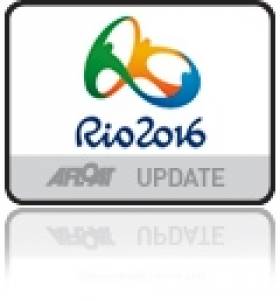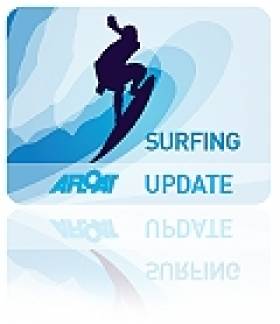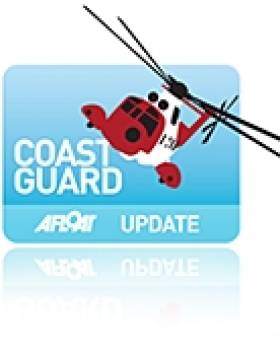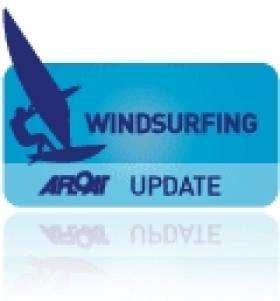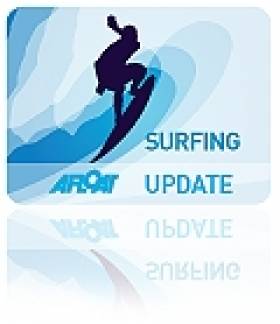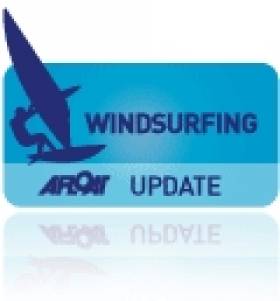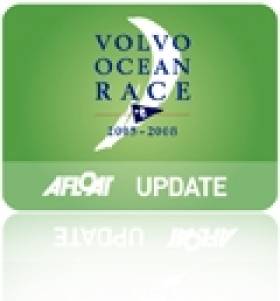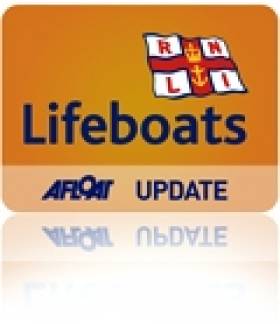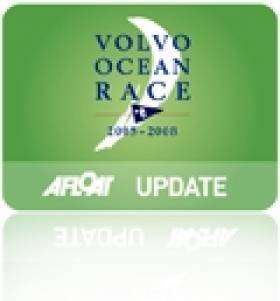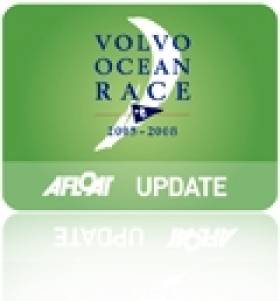Displaying items by tag: video
Videos Get Up Close With Annalise Murphy
#Annalise - A new series of videos (via Sailfeed) peers into the world of Afloat.ie Sailor of the Year and Olympic hopeful Annalise Murphy as she readies herself for her next Olympic campaign.
With little more than three years to go till the first races in Rio, Ireland's top Laser Radial prospect discusses her commitment to the sport and the hard work she's determined to put in between now and 2016.
And it almost goes without saying that the whole of Ireland will be behind 'The Irish Lever' all the way as she takes on the best of the best in Brazilian waters.
More from Annalise below:
Annalise Murphy Interview - The Journey from Atomic on Vimeo.
Annalise Murphy - The Journey/The Gathering from Atomic on Vimeo.
Spectacular Winter Surfing Captured On Video At Home And Abroad
#Surfing - Iceland, of all places, may not be known as a surfing hot-spot - but Irish wave rider Eoin McCarthy Deering has made something of the freezing swell, as the video above demonstrates.
The clip, via IrishCentral, was captured using one of the now ubiquitous GoPro portable HD cameras that enable extreme sports enthusiasts to record footage right from the centre of the action.
Closer to home, Epic TV reports on yet more incredible sessions at Mullaghmore Head and Aileens, this time by visiting surf pros Kohl Christiansen and Aritz Aranburu - see the videos below.
Christiansen took on the giant waves off Sligo - which are featured once again among the nominees for the Billabong XXL Big Wave Awards - while Aranburu headed to Clare with British rider Tom Lowe for a run at the famed surf break.
Kohl Christiansen at Mullaghmore Part 1:
Kohl Christiansen at Mullaghmore Part 2:
Aritz Aranburu at Aileens:
Howth Coast Guard Assists Powerless Boat In Drogheda
#Coastguard - The Howth unit of the the Irish Coast Guard responded this weekend to a vessel that lost power at the mouth of the River Boyne.
Howth's coastguard crew were undertaking helm training with a passage to the Drogheda unit to support the Drogheda Marina launch when they were notified that a ski-boat planning to join the flotilla had lost power on the Drogheda Bar.
The vessel, with four people aboard, was taken under tow - while a mother and child on a second vessel suffering from serious sea-sickness were also transferred to the coastguard boat.
As previously reported on Afloat.ie, the Drogheda Port Company undertook dredging works in January this year on the entrance to the port on the River Boyle, following earlier works in 2010 to remove sand accumulating at Drogheda Bar.
First Irish Woman To Windsurf Infamous Hawaiian Wave
#Windsurfing - History has been made in Hawaii with the first Irish woman ever to have windsurfed the infamous 'Jaws' surfing break, as The Irish Times reports.
Twenty-six-year-old Katie McAnena, a doctor from Galway, demonstrated perfect timing as she leapt into the water from an overhanging cliff.
An experienced windsurfer with four Irish women's championships to her name, McAnena told the paper how she maintained caution on the wave and stayed on its shoulder to ride it out.
“The sound and the feeling of it going through my bones was extraordinary, an out-of- body experience,” she said. “I haven’t managed to sleep since.” The Irish Times has more on the story HERE.
It's been an exciting time lately for Ireland's women waverers, as just six months ago northwest surfing scion Easkey Britton became the first woman ever to surf in the waters off Iran.
Shore Shots Film Fest Is 'Roaring Success'
#Surfing - Ireland's first ever surfing themed film festival has been hailed as a "roaring success" all round, according to surf website Magicseaweed.
The Shore Shots Irish Surf Film Festival - which took over the Light House Cinema and the Generator Hostel in Dublin's Smithfield last weekend, as previously reported on Afloat.ie - featured the Irish premieres of five new big-screen surfing films, including the 3D epic Storm Chasers.
But it was the Short Film section attracted the most excitement and plaudits over the two days, with an edit of Fergal 'Ferg' Smith - tackling the biggest and best waves Ireland has to offer over two years - claiming top prize in the category.
Others of note in the shortlist include bodyboarder Peter Clyne and some truly exciting POV footage from Dylan Scott - shot with a single GoPro and put together on the smallest of budgets.
North Of Nowhere from Peter Clyne - Outer Cells on Vimeo.
trendynewatrocity2 - By Dylan Stott from MSW on Vimeo.
Magicseaweed has much more on happenings from the festival HERE.
Storm Chase Mission 2 Abandoned At Last Minute
#Windsurfing - Mission 2 of the Red Bull Storm Chase to Galicia has been abandoned at the last minute due to an unstable weather forecast for the coast of northern Spain.
It's a big blow to the six waveriders who qualified for the second-stage of the global windsurfing challenge after three rounds of exciting competition in Brandon Bay less than two months ago.
The storm-force winds that swept the Kerry coast at the end of January provided the perfect conditions to test the mettle of the brave sailboarders who took to the water at the 'Dumps' ad 'Hell's Gate'.
Of the ten-strong field, six survived to advance to the second round - Marcilio Browne, Dany Bruch, Victor Fernandez, Robby Swift, Julien Taboulet and Thomas Traversa.
And Red Bull have posted a video compilation of highlights of all the action from Mission 1 in Kerry, which you can see below:
VOR Update: Sanya Back On Route, Assembly Time For VOR 65
#VOR - The Chinese port of Sanya is the latest addition to the route for the next Volvo Ocean Race.
The sunny city in southern China - and the "best kept secret in sailing" according to Volvo Ocean Race CEO Knut Frostad - returns to the race with previously announced addition Lisbon after its debut hosting in the 2011-2012 edition,
"We were given an exceptional welcome by Sanya in the last edition, with the stopover providing a unique take on the race, and it's gratifying to know we will be back to build on our legacy," said Frostad.
Sanya also fielded a team backed by Discover Ireland in the last edition of the global yachting challenge - though they dealt with some misfortune only hours into the first leg of the race, suffering very serious hull damage as seen HERE.
Meanwhile, progress on the new design VOR 65 that will be raced in the 2014-15 Volvo Ocean Race made a great leap forward this week as the hull completed at Persico in Italy and the decking built at Multiplast in France made their way to Green Marine in Southampton for assembly.
The video above also includes a sneak peak at a mockup of the completed design that will hopefully take to the water in the coming months.
Kilmore Quay RNLI Tends to Fishing Vessel in Epic Callout
#RNLI - The volunteer lifeboat crew at Kilmore Quay RNLI in Co Wexford responded to an 11-hour callout yesterday morning (Sunday 10 March) involving a 23-metre fishing vessel that had got into difficulty 40 miles south of the harbour. See video of the operation below.
With a biting easterly wind, the lifeboat crew made their way just after 8am to the vessel, which had suffered machinery failure, and arrived on scene at 10.40am.
Establishing a tow between the lifeboat and the fishing vessel with five crew onboard, the two vessels made slow progress back to shore in worsening conditions.
Commenting on the long callout, Kilmore Quay RNLI volunteer lifeboat crew member Aidan Bates said: “It was a bad day for a callout yesterday but the fishing vessel needed our assistance and the weather was worsening by the hour. By the time we were returning with the boat under tow the winds were blowing gale force seven to eight and it was choppy enough.
"Thankfully everyone was safe and the lifeboat crew were able to return home after a long day at sea.”
Lisbon Added to VOR Race Route for 2014-15
#VOR - Lisbon will again feature in the Volvo Ocean Race route after striking a two-race deal with organisers.
The Portuguese capital - which made its VOR debut in last year's edition of the race, hosting the start of the penultimate leg - will again welcome the VOR fleet in 2015 after the North Atlantic crossing leg from Newport in Rhode Island, and will repeat the celebrations in 2018.
"What Lisbon achieved in the last race was remarkable when you think that the city was making its debut," said VOR COO Tom Touber.
Lisbon is the eighth host port to be announced for the 12th edition of the round-the-world yacht challenge, following the return of Abu Dhabi to the calendar a few weeks ago.
VOR Roundup: Abu Dhabi Returns, Puma Quits Sailing
#VOR - Abu Dhabi will return to the Volvo Ocean Race in 2014-15 both with a sailing team and a stopover in the UAE capital, it was announced earlier this week.
Once again skippered by Ian Walker, the team is the third confirmed entrant in the 12th edition of the round-the-world yacht race, after the all-woman Team SCA and a team representing the Brazilian state of Pernambuco.
The Abu Dhabi team joined the last edition of the race under the auspices of former commercial director David Hassett, who was previously instrumental in bringing the race to Galway for the first time in 2009, and was one of the team behind Ireland's underdog entry the Green Dragon, which surprised the yachting world by clinching three podium finishes.
Meanwhile, the stopover will be the end point of Leg 2 from Recife in Brazil, making for "one of the longest and most challenging in the 40-year history of this race" according to Volvo Ocean Race CEO Knut Frostad.
"Heading into the Southern Ocean is never easy and this route will test the sailors to the limit," he added. "The finish line in Abu Dhabi will be one of the most eagerly awaited in the race.”
The news comes two weeks after Newport in Rhode Island was announced at the sixth host port of the race - and an understanding that no Irish ports will feature in the final route, according to The Irish Times.
Elsewhere, the VOR website visits the Persico factory in Italy in where the hulls are being completed for the new design VOR 65 in its latest video update - and also takes a look at the construction of the rigs for the new boat at Southern Spars in New Zealand.
In other news, it's emerged that Puma is pulling out of the sailing market, cutting its support for the Oracle team in the America's Cup and permanently dry-docking its Volvo Ocean Race team.
Reuters reports that the decision was made in the face of dwindling profits at the German sportswear brand.
Puma came third in the last edition of the VOR, which has its successful climax in Galway last summer.


























